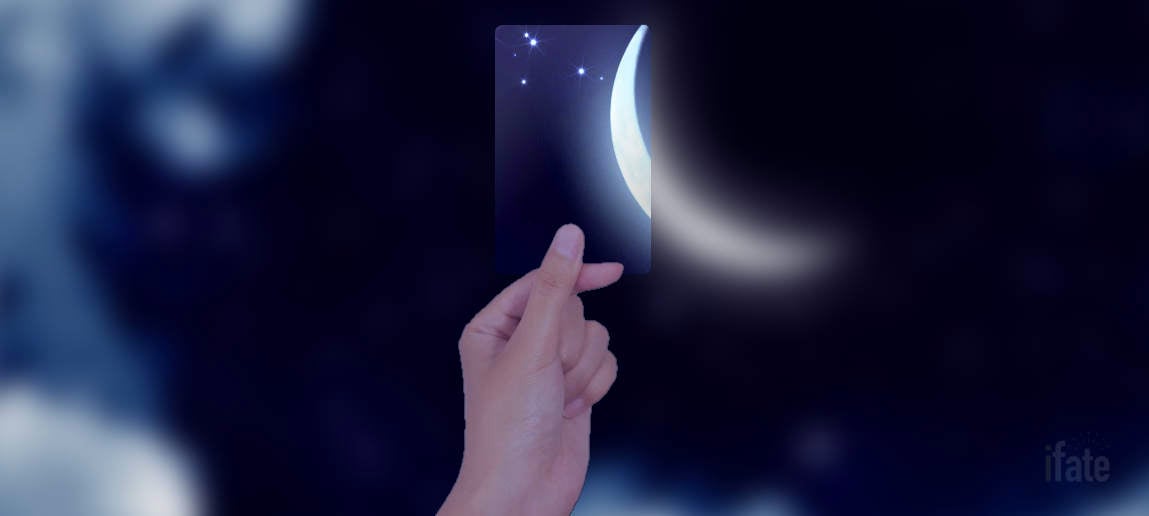Using “clarifying cards” is a very common tarot technique used to maximize the meaning and relevance of your tarot readings.
In this article we’ll discuss how you can add clarifying cards to your tarot readings. And we’ll touch on a few strategies for where to use them in your tarot spreads — and where not to.
What is a clarifying card?
Simply put, a clarifying card is an additional tarot card which is drawn to add clarity to the first tarot card — which may be ambiguous or unclear.
You might be thinking “isn’t tarot always pretty unclear?”
As we all know, to practice the art of tarot reading is to be at home in the land of mysteries. Occasionally our cards paint vivid, clear pictures and answer us directly — but more often than not, their guidance is subtle and indirect.
Sometimes, special clarifications are necessary for the rest of the reading to come together.
For example, when the cards leave us hanging between two possible interpretations, it’s often instructive to draw an additional card for clarification on which interpretation is correct.
What a clarifying card isn’t?
One thing that’s important to remember about clarifying cards, is that they aren’t technically part of your reading. They’re not “replacement cards” which override the meaning of the original card.
… it’s considered poor form to use a clarifying card as a way to “draw again”. They aren’t “second chance” cards…
In all cases, the card that’s part of your tarot spread is the “correctly” drawn card.
The clarifying card should be seen as an “assistant” to help you understand that original card, but never as a “do over”.
When should you use clarifying cards?
A clarifying tarot card should be used when you have more than one possible interpretation of the same card — and both seem equally possible to you. Or, when you think you’re on the right track but you need confirmation of your hunch in order to understand subsequent cards.
When should you not use a clarifying card?
Clarifying cards should not be used as a crutch when you simply don’t like the card you originally pulled. For example if you’re asking about business prospects and you’re horrified as you pull the 10 of swords, it’s considered poor form to use a clarifying card as a way to “draw again”. They aren’t “second chance” cards. They’re clarifiers. Likewise, clarifying cards should never be used as a way to ask: “Is that really what you meant?”
It’s also important not to overdo clarifying cards. Tarot isn’t meant to be a clear at all times. To read tarot is to become comfortable to an extent with not fully understanding. Continuously asking for “clarity” after every card can make the experience less introspective and intuitive — and become a replacement for true insight.
Where to use tarot clarifying cards in your tarot spreads
A clarifying card can be used on any card in your tarot spread, but tarot readers have different approaches when it comes to using them in practice.
Some readers like to draw clarifying cards and place them directly next to the card in the spread which they are trying to clarify. Typically, the clarifying card would then remain next to that card for the remainder of the reading.
Other readers prefer to shuffle the remaining cards in the deck, draw one card for clarification, and then return the clarifying card to the deck.
Lastly, some readers even use what’s called a “clarifying deck”. This is an especially useful practice when trying out a new tarot deck. By keeping your old, trusted deck on hand you can pull a card from that deck to help you understand the new one.
Examples of clarifying card use
Here are some specific examples of how to use clarifying cards in your tarot readings:
- Use clarifying cards better understand who or what a tarot card is referring to. This is a particularly useful practice if you think a card is referring to a particular person — as is often the case with tarot court cards.
- Many cards have more than one accepted interpretation among tarot readers. If both of the interpretations make sense in your reading, a clarifying card can help guide the reader find the correct path for reading that specific card.
- Sometimes a tarot spread only scratches the surface of a particular issue, and you’ll want to dig deeper into the question. You might want to ask something like, “Will that situation change in the near future?” or “Are there any things I can focus on to avoid that situation?” or “Will there be any outside factors influencing that result?“. These follow-up questions can extend the range of even the best tarot spreads.
- Clarifying cards can also be used to ask parallel yes or no questions. If you don’t know how to use tarot cards for quick yes or no answers, see our guide to yes or no meanings.
- Clarifying cards can also be used for tarot associations. For example, each card has an associated zodiac symbol, a season, a gender and an associated element. A clarifying card can be used to narrow down that association or provide additional clarity on something referenced in the tarot spread.
- Use a separate clarifying deck to help understand a card in a new or unfamiliar deck of tarot cards.
The bottom line is, how and when you use clarifying cards is really up to you. Ultimately they’re just one card tarot readings which are done quickly “on the side” of your main reading.
Just keep in mind that tarot skills improve when we stare into the unknown. Some clarification is good, but try not to use it as a crutch which prevents you from using your intuition and insight.



